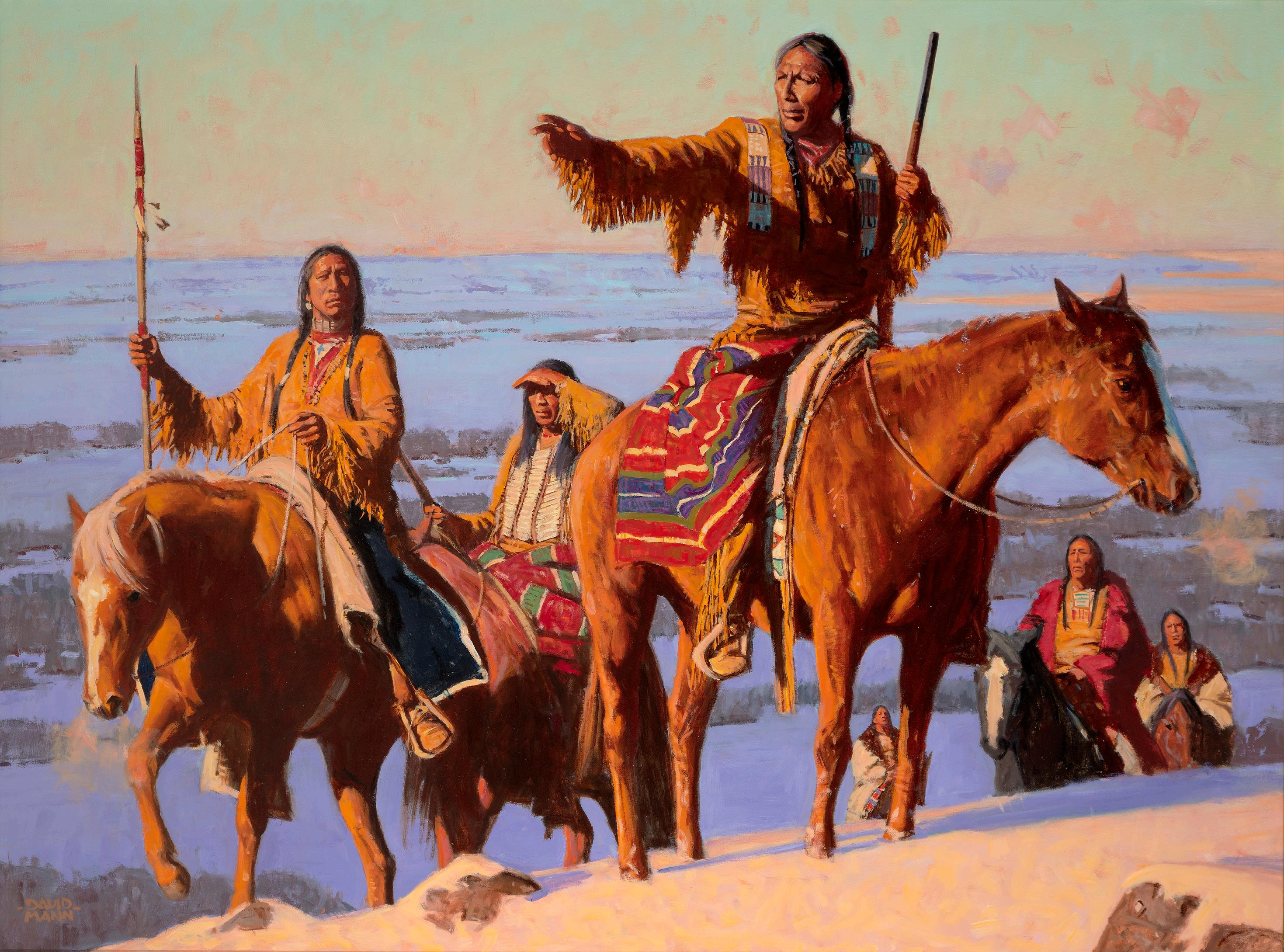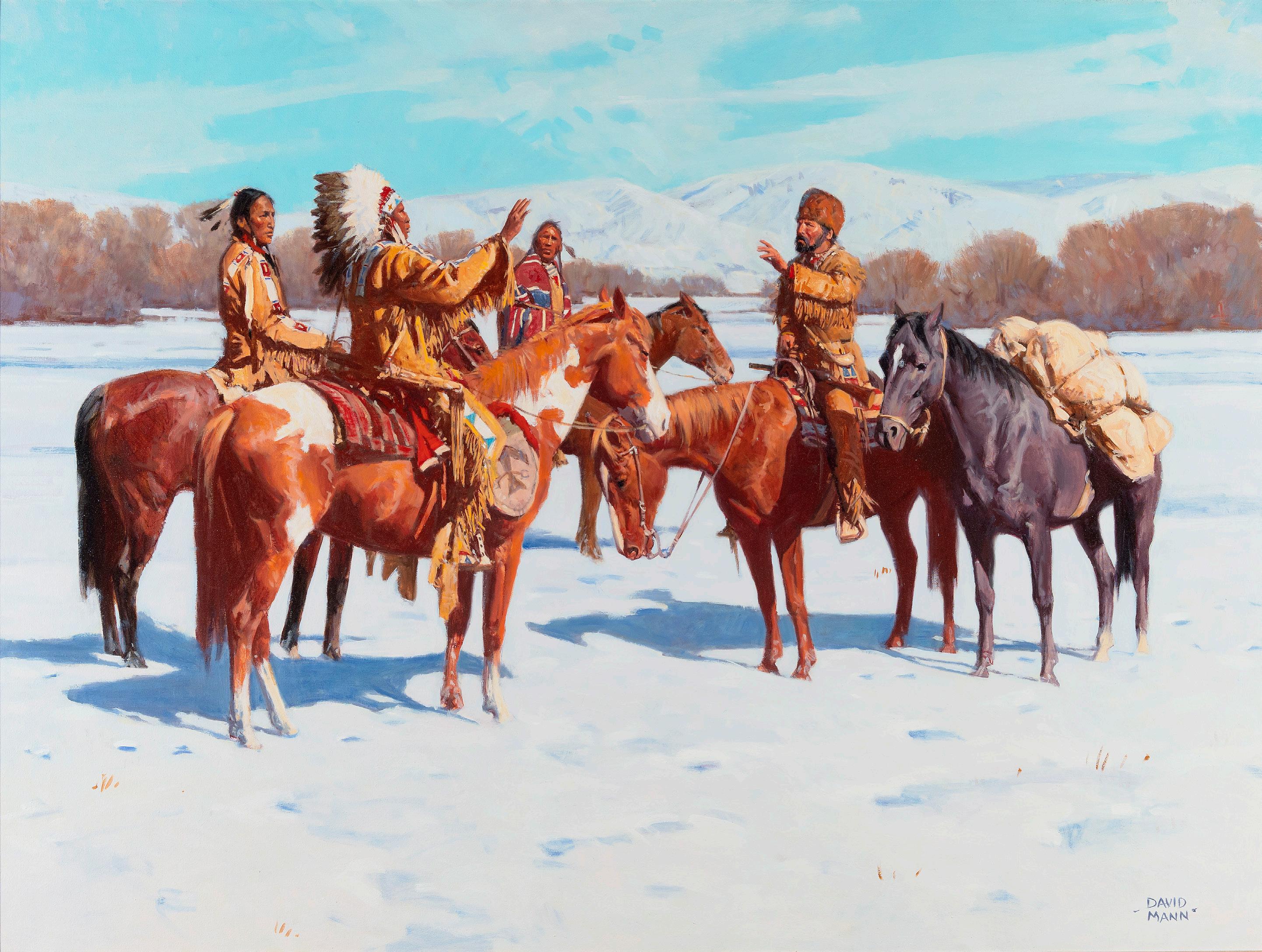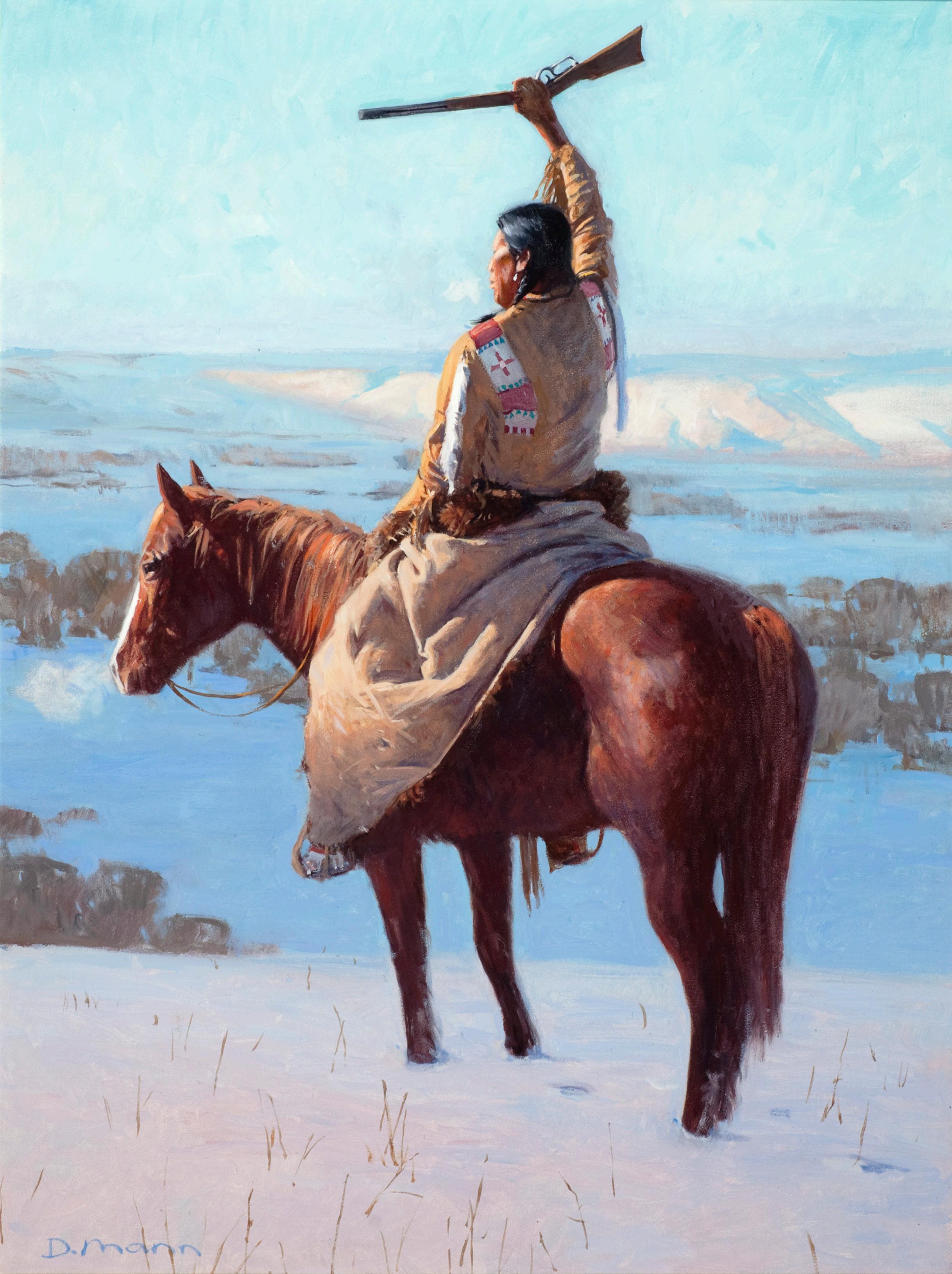
3 minute read
David Mann
1948 - 0000
Growing up in Bountiful, Utah, David Mann’s interest in art was inspired by both his father and mother. David’s father was a farm-journal writer, photographer, weekend painter, history buff, and avid reader who regularly brought home books he found in used-book stores. David’s mother, the daughter of a sheepherder, grew up in a remote part of Utah. She would tell David stories about her encounters with the Indians there, and read him stories like, White Indian Boy: My Life Among the Shoshones by Elijah Nicholas Wilson, the true story of an 11 year-old pioneer boy in the Great Salt Lake Basin who ran away from home and lived among the Shoshone Indians for two years. David grew to love the Western imagery, particularly Alfred Jacob Miller’s paintings in a book he had and the Frank McCarthy illustrations he saw in Life magazine.
Among David’s favorite activities was visiting galleries and art museums with his father and watching his father paint. As far as David was concerned, it was a forgone conclusion that he would become an artist. “I always figured I would be an artist, although career-wise it was real fuzzy; I didn’t know how that worked,” he says. Unfortunately, David’s father didn’t see it that way, “In high school I told my dad I wanted to be an artist. He said that was a bad idea. He said, ‘Do you know how many $100 paintings you need to sell to provide for a family?’”
As a Mormon, David Mann was thrilled when after finishing high school his two-year Mission assignment was to Indian reservations in the Southwest, where he lived with the Apache on the San Carlos reservation, the Pimas and Papagos near Tucson, and the Pueblos and Navajos near Albuquerque. After completing his Mission, Mann enrolled at Weber State University in Ogden, Utah majoring in art education rather than fine arts. And, following college Mann taught art for a year, describing the experience as “amazing.” However, he says, “I was not a disciplinarian, not a record keeper. I thought everyone should do art because they loved it, but the school officials didn’t see it that way.” Instead, Mann went on to work in a variety of jobs, including: construction, as a librarian at the State Library for 10 years, and at the Department of the Interior – while he continued to paint in his free time. Finally, Mann’s wife volunteered to support the family for five years while he pursued his art full-time. Looking to the paintings of Frank Tenney Johnson and Frederic Remington for his inspiration, within four years Mann found success as a professional artist.
Mann’s paintings tend to focus on Plains Indians in the mid to late nineteenth century, before they were moved to reservations and could still practice their rituals. Working from his home and studio outside Hyrum, Utah, Mann invests a lot of research into the details for each painting. Drawing on often long-term relationships with Sioux, Apache, Navajo, and Omaha models, he carefully chooses the clothing and artifacts and then photographs the models in a variety of poses that he uses as references for his paintings. “Then you get the sun gleaming off the feathers and shadows carving out his features. That’s really when the magic starts to happen,” he says.
FIRST LIGHT Oil on Canvas 30 x 40 inches

THE PARLEY Oil on Canvas 30 x 40 inches

SIGNAL AT SUNRISE Oil on Canvas 18 x 24 inches










